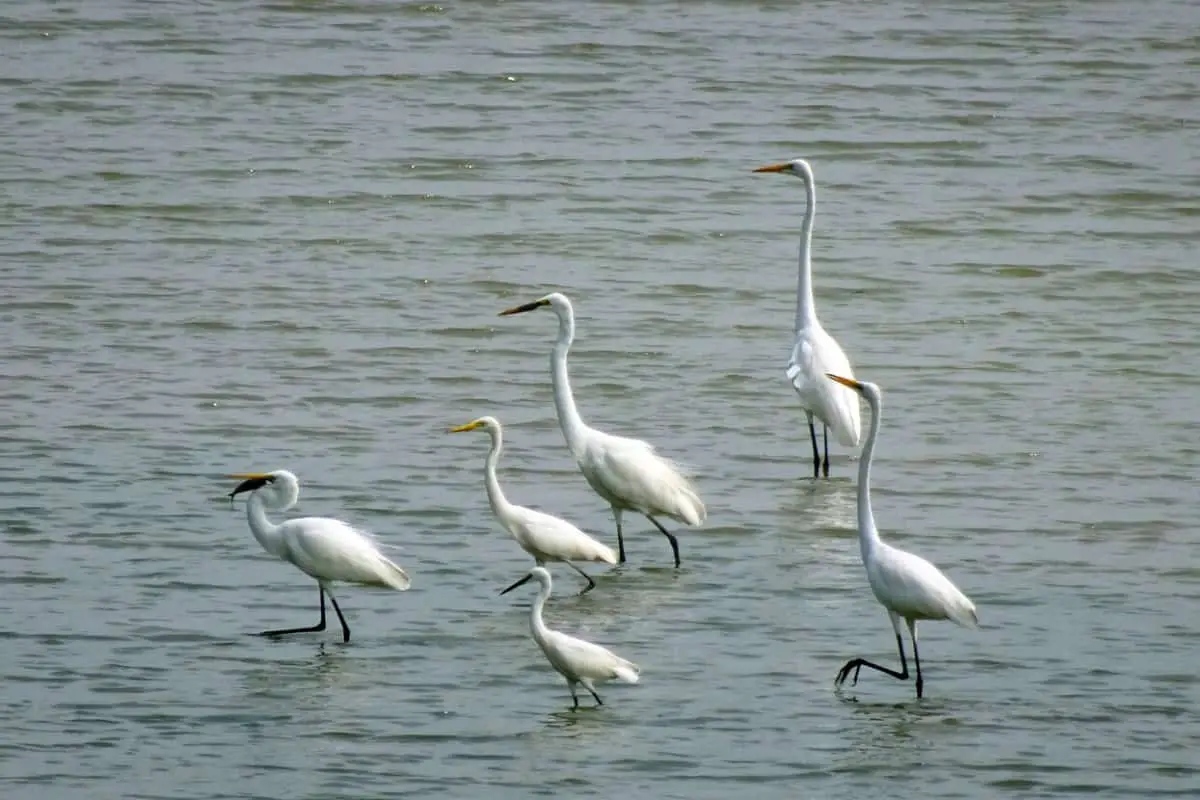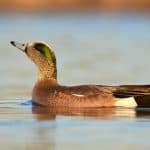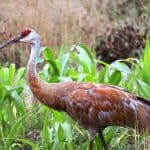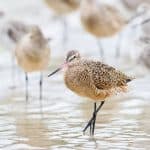Common Name: Intermediate Egret
Scientific Name: (Ardea intermedia)| Size | Diet | Range in Hawaii | Status in Hawaii |
|---|---|---|---|
| 24 in. - 27 in. | fish, frogs, and small crustaceans | Northwestern Hawaiian Islands | Least Concern |
The Intermediate Egret, also known as Ardea intermedia, is a wading bird species that is native to Asia, Australia, and the Pacific Islands. While the species is not native to Hawaii, it has been known to make occasional appearances on the islands as a non-breeding visitor and vagrant. With its striking appearance and unique behavior, the Intermediate Egret is a fascinating bird species that has captured the attention of birdwatchers and avian enthusiasts around the world.
In this article, we will explore the world of the Intermediate Egret, its unique characteristics, and its occasional presence in Hawaii.
Intermediate Egret
Appearance

The Intermediate Egret presents a striking figure with its slender and graceful stature. Standing around 24 to 27 inches tall, this elegant bird boasts a pristine white plumage that contrasts beautifully against its long, dark legs and bill. The strikingly long neck and equally elongated legs accentuate its poise, while it’s bright yellow eyes provide a captivating focal point against the white canvas of its face.
Diet
The Intermediate Egret is a discerning diner with a diet as diverse as its elegant demeanor. With a skilled and patient approach, it hunts for aquatic delicacies such as fish, frogs, and small crustaceans that thrive in the watery realms it frequents. Insects, small reptiles, and even small mammals are not exempt from its menu, showcasing the versatility of its palate.
Nesting
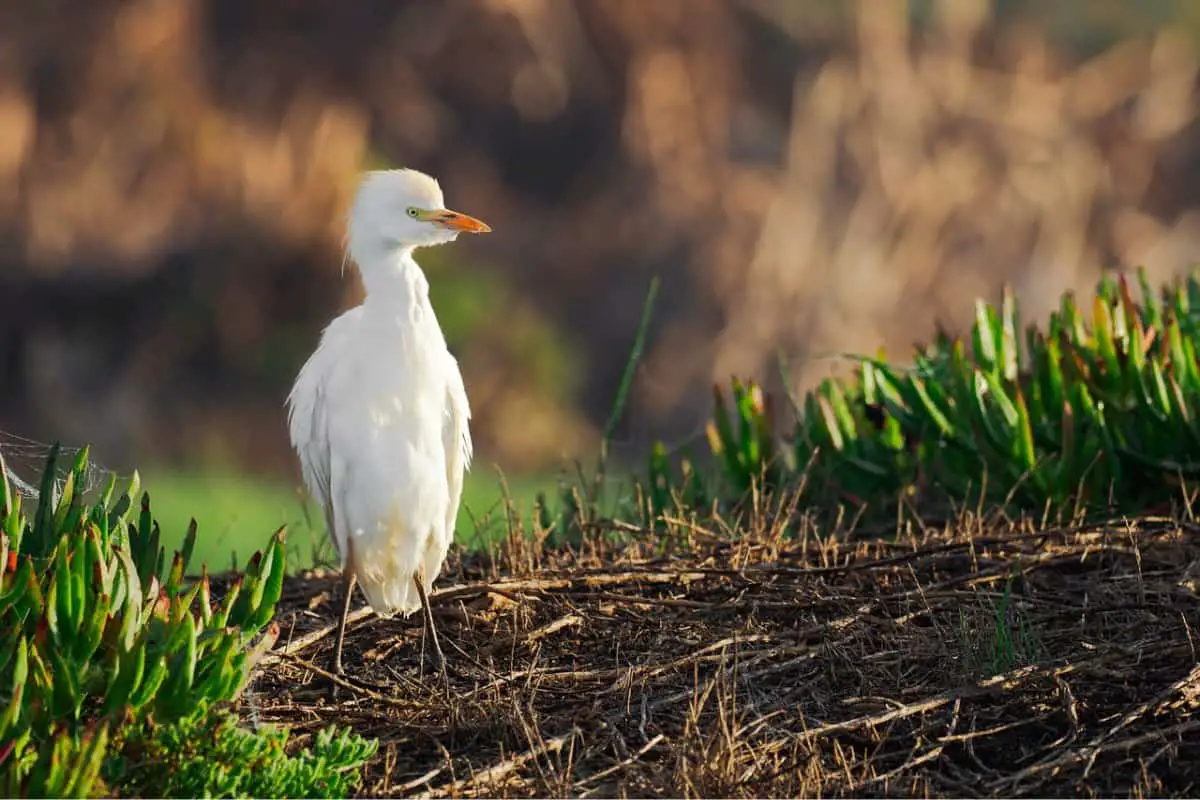
These elegant birds choose their nesting sites with precision, often opting for tall trees or shrubs near water bodies. Their nests are a marvel of simplicity and resourcefulness, constructed from sticks and twigs, forming a sturdy platform that cradles their future brood.
During breeding season, the Intermediate Egret’s plumage takes on an enchanting transformation, with delicate plumes and feathers adorning its head, neck, and back. These decorative elements play a role in courtship displays, as the egrets engage in graceful dances to attract potential partners.
Once a pair forms a bond, they collaborate to build their nest and rear their young. The female lays eggs, and both parents take turns incubating them. After hatching, the nest becomes a bustling hub of activity, as both parents diligently feed and care for their hungry chicks.
Behavior
Their signature feeding method involves standing still in shallow waters, patiently waiting for their next morsel. When the opportune moment arrives, their lightning-fast bill strikes with surgical precision, leaving little chance for escape. This hunting technique reflects their ability to harmonize stillness with explosive action.
Beyond their hunting prowess, Intermediate Egrets engage in intricate courtship displays during the breeding season. With head plumes and elegant dances, they communicate their intentions to potential mates, showcasing their flair for romantic gestures.
Additionally, these egrets are communal in their nesting habits, often nesting in colonies with other water birds. This behavior not only provides safety in numbers but also fosters a sense of community within their wetland habitats.
Habitat
These graceful birds are commonly found in wetland landscapes, where their presence becomes a testament to nature’s delicate equilibrium. Marshes, swamps, and the fringes of lakes and rivers serve as their preferred haunts, providing the perfect setting for their hunting and nesting endeavors.
Range
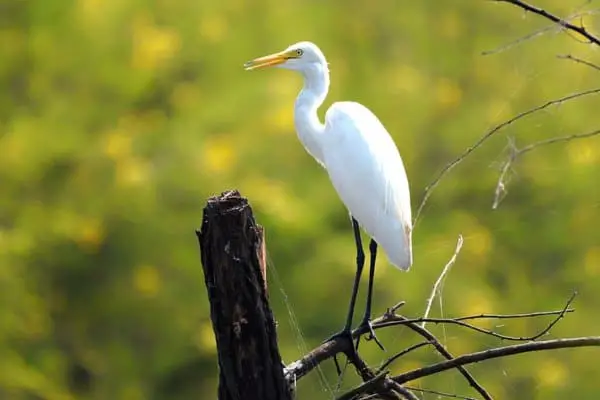
The Intermediate Egret, known for its presence in Australasia and East Asia, occasionally graces the Hawaiian Islands as a rare non-breeding visitor. This elegant bird made a notable appearance on Sand Island, Midway, in the Northwestern Hawaiian Islands on October 24, 2013. During its two-week stay, it became part of the island’s avian diversity.
Conservation Status
The conservation status of the Intermediate Egret (Ardea intermedia) is a reminder of the delicate balance between human activities and nature’s treasures. Classified as a species of “Least Concern” by the International Union for Conservation of Nature (IUCN), these elegant birds currently enjoy a relatively stable population.
Interesting Facts
1. Scientific evolution
The naming of this species has evolved over time. Initially known as Ardea intermedia, it was later placed in the genus Mesophoyx. Despite this, the name Ardea intermedia is still widely used to refer to the species.
2. Cultural significance
In some cultures, egrets, including the Intermediate Egret, hold symbolic importance. They are sometimes associated with patience, tranquility, and even elegance, reflecting their graceful behavior.
3. Hybridization
The Intermediate Egret has been known to hybridize with other egret species, such as the Little Egret (Egretta garzetta), leading to interesting mixed characteristics in some individuals.
4. Human interaction
In some areas, these egrets are considered beneficial to humans due to their role in controlling agricultural pests. Their consumption of insects and rodents helps mitigate potential crop damage.
5. Historical art and symbolism
Egrets, including the Intermediate Egret, have historically appeared in various art forms and have held symbolic meanings in different cultures, representing themes such as purity and tranquility.
Frequently Asked Questions
1. How does the Intermediate Egret differ from other egret species?
While resembling other egret species, the Intermediate Egret’s size, plumage, and habitat preferences set it apart. Its intermediate size, slender build, and distinctive ornamental plumes during breeding season contribute to its unique appearance.
2. Do Intermediate Egrets make vocalizations?
While not known for elaborate vocalizations, they can produce low croaks and soft grunts during interactions and courtship displays.
3. What is the lifespan of an Intermediate Egret?
In the wild, the lifespan of an Intermediate Egret is typically around 15 to 20 years, but this can vary based on factors such as habitat conditions and predation risks.
4. Can I observe Intermediate Egrets in captivity?
Intermediate Egrets are typically not found in captivity as they are wild birds that thrive in their natural wetland habitats. Conservation efforts are focused on protecting their wild populations.
5. What is the most distinctive behavior of the Intermediate Egret?
The “foot-stirring” technique, where they move their feet in the water to disturb prey, is a unique hunting behavior that sets them apart from other heron species.
